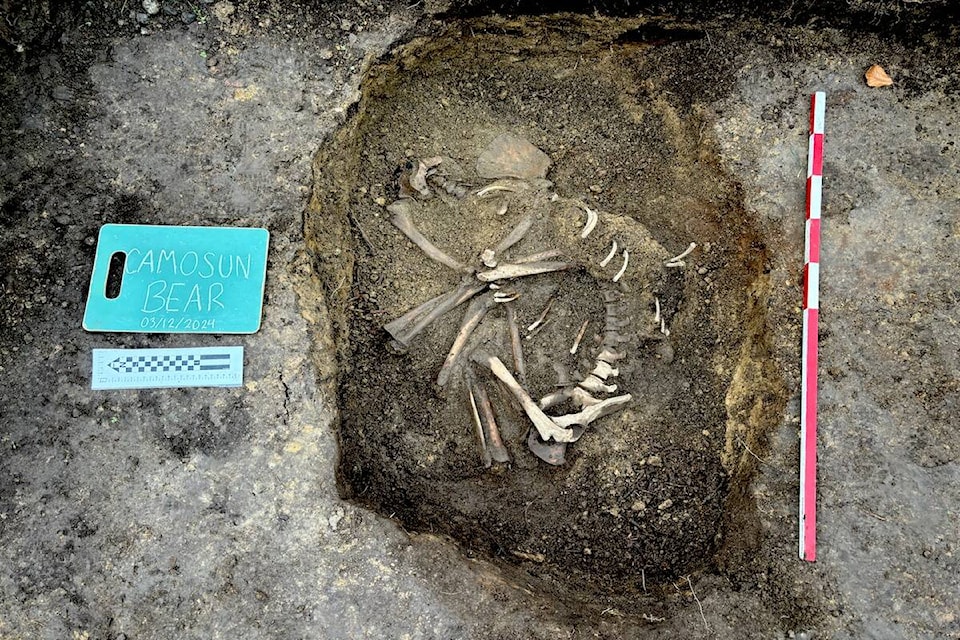When Camosun College archaeology instructor Nicole Kilburn was gifted part of a hunted black bear’s carcass, she immediately knew it could provide her students with a unique learning experience.
After the carcass was buried at the college’s campus in June 2021, students got to take part in a hands-on archaeological dig when they unearthed the remains this winter.
“We were also able to model Indigenous ways of knowing and discuss protocols by showing respect in culturally appropriate ways,” Kilburn said in a news release.
The bear, minus its head and paws that had already been used for ceremonial purposes, was gifted to Kilburn by an Indigenous colleague.
In 2022, students used ground-penetrating radar technology to successfully detect the remains as an anomaly lying beneath the surface.
This winter, the time came for the school’s anthropology pupils to try their hand at excavation as they dug up the animal remains.
“We got to use different types of screens as well as try a variety of tools including wooden BBQ skewers and paint brushes to carefully expose the bones,” the Camosun instructor said.
The digging group was joined by students and faculty from Camosun’s Indigenous Studies program, who helped show appreciation for and honour the life and death of the bear through song.
“Valuing and respecting Indigenous ways of knowing and being are key parts of teaching and learning, particularly as archaeologists grapple with the dark history and legacy of the discipline,” Kilburn said.
Once the bones were exposed, students learned how to map them with coordinates, collect elevation data, take photographs for documentation purposes, carefully remove small elements and bag items through proper recovery techniques.
Forensic anthropology students then cleaned the bones in the lab and created an inventory that helped in reconstructing the bear skeleton. In a final step, the bones were laid out and labelled so they could be included in a comparative collection for analysis.
READ: Royal B.C. Museum reopens ceremonial house, First Nations language exhibits
